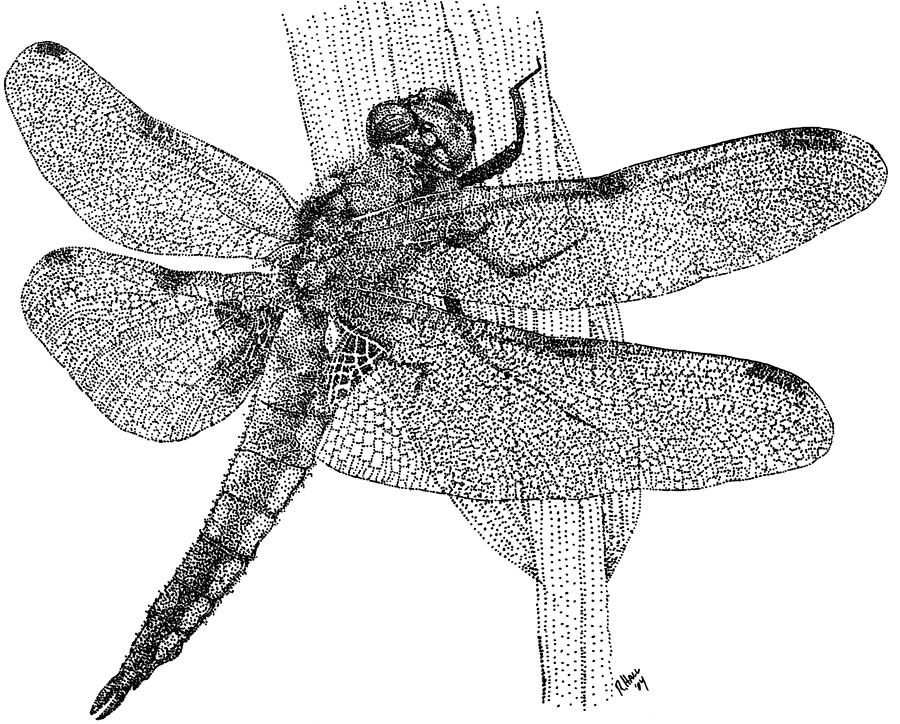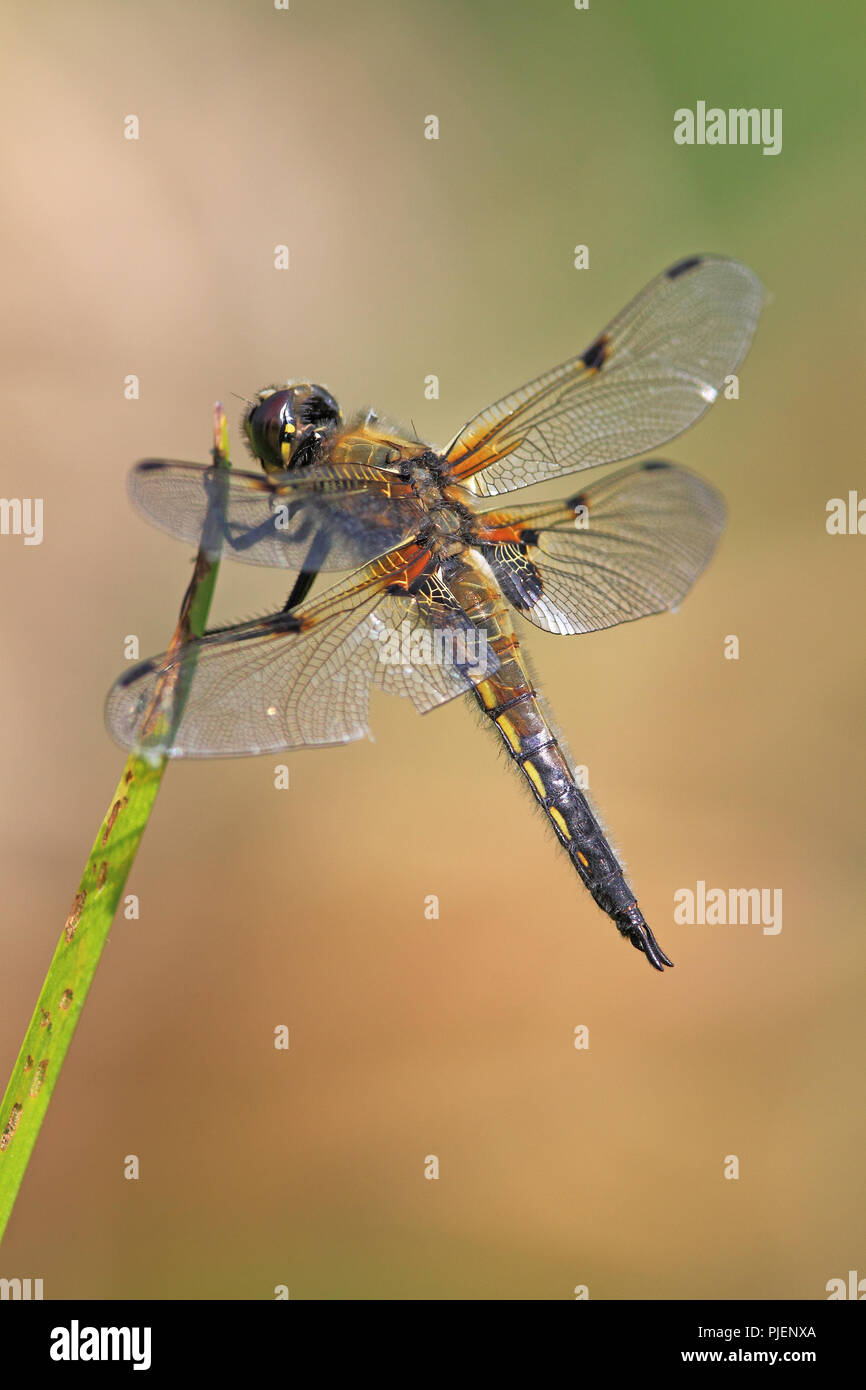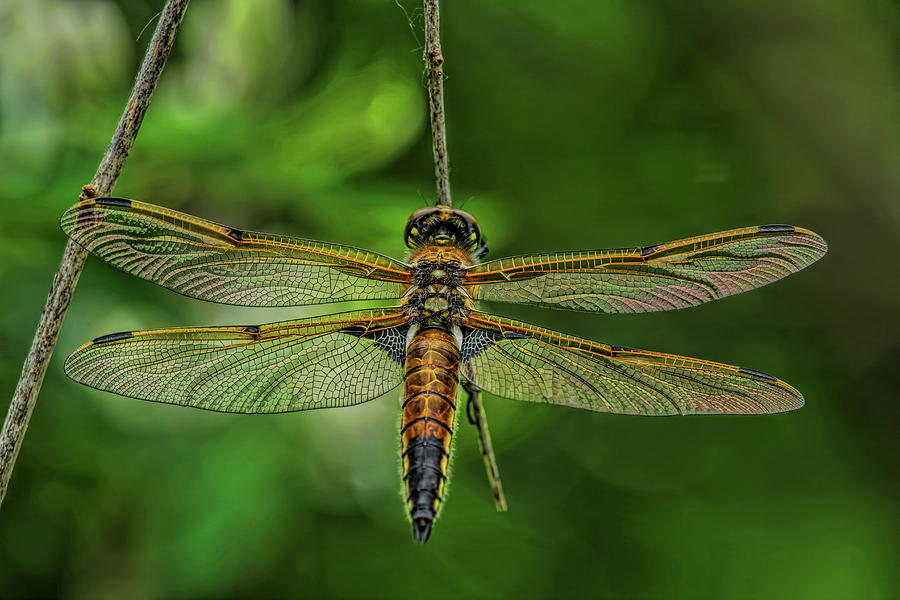4 Spot Skimmer Dragonfly
The four-spot skimmer dragonfly won among 4 insect contestants voted on by Alaskan schoolchildren. The runners up included the unmarked slender mosquito, the mourning cloak butterfly, and the bumblebee. Excerpt from 'Dragonfly Wins State Title; Mosquitoes Miffed' by Ned Rozell / University of Alaska, Fairbanks. One of the most recognizable orders of insect is the Odonata which encompasses both Dragonflies and Damselflies. There are some 5,500 identified North American species in the order and over 450 of these are found throughout the United States and Canada alone.
The Dragonfly is a mobile floating pool skimmer that prevents the leaves and dirt from sinking by cleaning the pools surface first Leaves are removed quickly and not left to decompose in your water. Less nitrogen from rotting leaves = cleaner pool = less chlorine and other chemicals are used (and a more hygienic pool). Three different species, Four-spotted Skimmers (Libellula quadrimaculata), Eight-spotted Skimmers (Libellula forensis), Twelve-spotted Skimmer (Libellula pulchella), use the number of wing spots as their naming convention.
Talk about Skimmer dragonflies can often get caught up in the difference between the Skimmer family (Libellulidae) of dragonflies and their almost namesake genera Libellula. Species in the Libellula genera all have the common name Skimmer attacked to them, unlike other genera in the family with common names such as saddlebags, meadowhawks, pennants and the like.
The Libellula genera consists of eighteen different species, making it the largest genera in the family in terms of total number of species. They come in all shapes and colors. Different species sport different wing patterns. Therefore, there is really no one outstanding physical characteristic to help a lay person unite the group.
Three different species, Four-spotted Skimmers (Libellula quadrimaculata), Eight-spotted Skimmers (Libellula forensis), Twelve-spotted Skimmer (Libellula pulchella), use the number of wing spots as their naming convention. Two dark wing patches on the Widow Skimmer (Libellula luctuosa) technically qualifies its being called the two-spotted skimmer.
The top picture shows a Four-spotted Skimmer (Libellula quadrimaculata).


Eight-spotted Skimmers (Libellula forensis) have the least range of all the so called spotted skimmers. They live along the Pacific Coast and Rocky Mountains. The number of spots refers to the number of dark spots on the wings.
Twelve-spotted Skimmers (Libellula pulchella) show another different spotted wing pattern. The brown body of the males and females pretty much remains the same. The presence of the mostly yellow lateral abdominal stripe differentiates it from the female Common Whitetaile.

Widow Skimmer. Mature males develop white in the wings while mature females lack the white wing coloration.
4 Spot Skimmer Dragonfly
Red bodies mean that Neon Skimmers (Libellula croceipennis) can easily be confused with the Flame Skimmers, and possible many of the local Meadowhawk species. At reset, skimmer wings tend to be flat rather than forward pointing as with the similar looking Cardinal Meadowhawk. So wing position at rest provides a good initial field identification clue.

The wing color an the Neon Skimmer is also less pronounced compared to the the amber shade of color on the Flame Skimmer. This identification confusion is really only important in the five states of the Neon Skimmer range, Arizona, California, New Mexico, Oklahoma and Texas.
Flame Skimmers (Libellula saturata) have a slightly larger range of the Pacific Coast and Rocky Mountain states. The picture highlights the flat wing pattern and the extended amber markings on the wings.
Flame Skimmer (Libellula saturata) female with the less colorful brown body.
Needham’s Skimmer (Libellula needhami) is the East Coast version of the red bodied skimmer. For all intent and purposes it has a similar identification problem. Only experts can easily differentiate the Needham’s and the Golden-winged Skimmers. Males both have red bodies with a black stripe on the abdomen.
Female Needham’s Skimmer (Libellula needhami) have a tan body with dark stripe on the abdomen.
Here’s a picture of a female Golden-winged Skimmer for comparative purposes. Both Needham’s and Golden-winged Skimmers have overlapping ranges along the East Coast, therefore identity conflicts are easy to experience.
Great Blue Skimmer (Libellula vibrans) are fairly large dragonflies. There’s no mistaking the male, with the completely blue body. The picture shows a female. These dragonflies are sufficiently unique looking so as to not mistake them for others in the field.
Yellow-sided Skimmers like the Spangled Skimmers have yellow on the side of the abdomen. The absence of white spots on the wings is the best initial field identification clue for the Yellow-sided dragonfly. They are more common in the Southeast than the Northeast.
Slaty Skimmers are very common east of the Rocky Mountains. Males are easily identified by the dark or Slaty gray bodies.
Painted Skimmers sort of resemble the mor popular Halloween Pennants. The less amount of white stripe or coloration on the side of the thorax is one great to identify the Painted Skimmer. Otherwise, most experts suggest that the wing pattern on the Painted Shimmer is much less pronounced than the wing pattern on the Halloween Pennant. They are fairly common in East Coast and Gulf Coast states.
Hoary Skimmers are a very regional species, limited to Arizona and Southern California. The distinctive spots on the wings are a great field identification clue.
Common skimmer, Libellula luctosa Burmeister (Odonata: Libellulidae), male. Photo by N. Mirro.
Common Name: Skimmer, dragonfly
Insect Order: Odonata
Scientific Name: Varies
Description: Skimmers are the most common and colorful of the dragonfly family. They have two pairs of large, usually patterned, gossamer wings. The hind pair of wings is slightly larger than the forewings. The wings are held flat and extend outward from the body when at rest. The abdomen is long and variously colored. Commons skimmers are the most common and most colorful of the dragonflies. Male and female adults are different in appearance (dimorphic). They also change color with age. They have large compound eyes and short antennae and are equipped with chewing mouth parts. They vary in length from 1 inch to over 3 inches. Their wing span can reach about 4 inches.
Life Cycle:Simple metamorphosis (egg, nymph, adult). Immature stages are aquatic and do not resemble adults. Adults emerge in the spring, summer or fall and live for a few weeks to a few months. Adults mate in flight, the male clasping the female behind the head. After fertilization, the female deposits her eggs in emergent plants, floating vegetation or directly into the water. Nymphs develop in the water and take months or even years to develop to maturity. Once mature they climb from the water onto plants or rocks where they molt into adults. Most species of
dragonflies have one generation per year.
4 Spot Skimmer Dragonfly Solar Lights
Habitat, Food Source(s): Nymphs can be found in vegetation and hiding around underwater structures. Adults feed on insects such as mosquitoes, midges, flies and winged ants. Skimmers fly mostly during the day. They are called skimmers because they tend to fly low over the water. They often follow the same path and return to a familiar perch.

Pest Status: Skimmers are beneficial insects. Adults feed on mosquitoes, flies and other flying insects. Nymphs feed on aquatic insects, even small fish.
For additional information, contact your local Texas A&M AgriLife Extension Service agent or search for other state Extension offices.
Literature: Borror et al. 1989; McCafferty 1981.